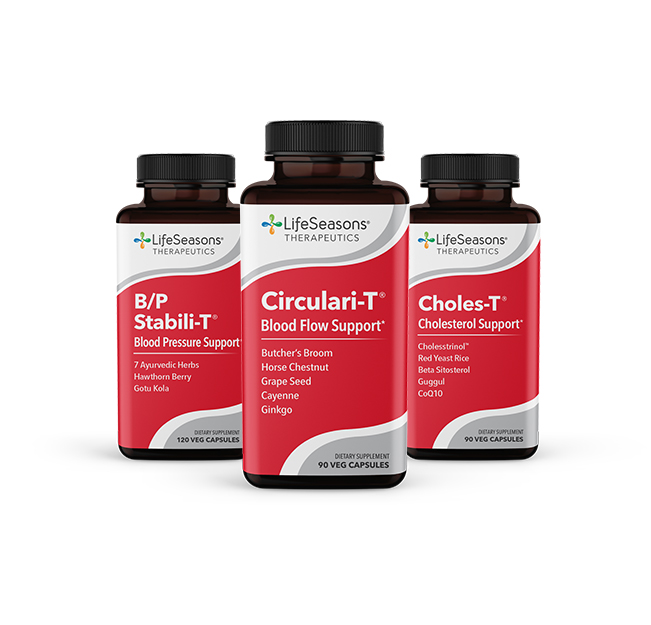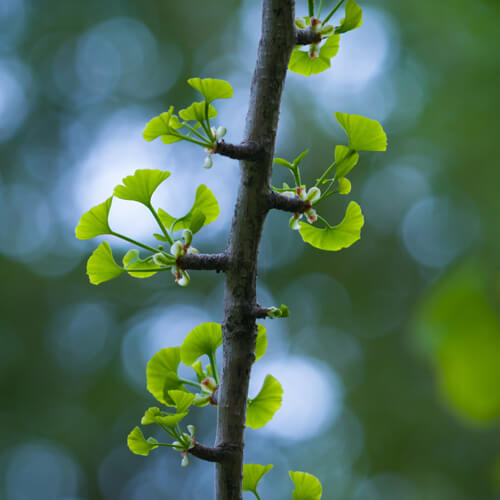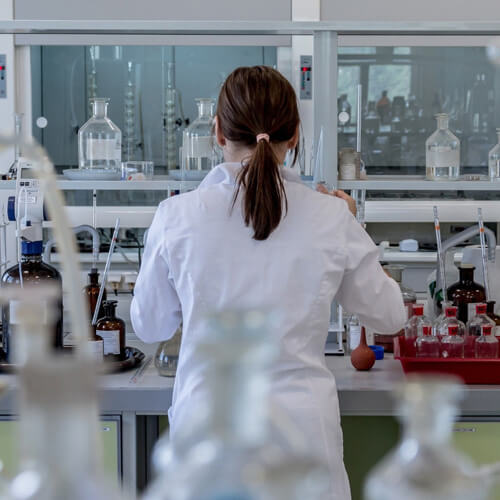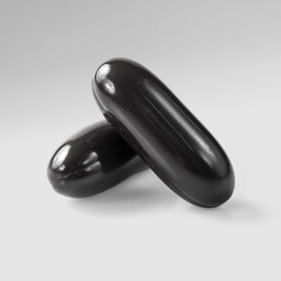BACKGROUND
Ingredient Type: Botanical
Also Known As: Salvia officinalis, Berggarten sage, Common sage, Garden sage, Golden sage, Holt’s mammoth sage, Kitchen sage, Purple garden sage, West Indian sage, Tricolor sage
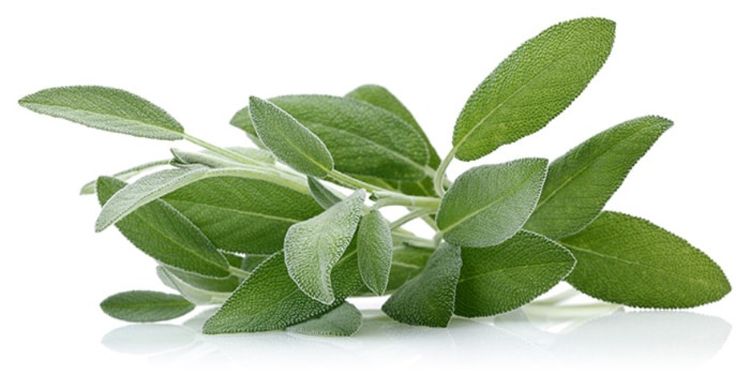
Sage is a perennial, evergreen dwarf shrub. Its scientific name comes from the Latin word salvere which means ‘to heal’. The herb, a member of the mint family is one of the most historically prominent traditionally used herbs in medicine. Native to the Middle East and the Mediterranean, and now naturalized to Europe and North America, there are over 900 species of Salvia throughout the globe.
Salvia officinalis, or common sage, has been found to contain the highest concentration of essential oil and is, therefore, the most researched and highly utilized species of Salvia in herbal medicine (2). This highly flavorful herb contains essential oils, polyphenols, and flavonoids. These are the main constituents which provide therapeutic benefit and the amount of these can vary greatly from one plant to the next. One study analyzed the composition of these biologically active chemicals and their concentrations based on the origin of the plant. They found that even within selecting plants from different regions of one country, Tunisia in this case, the ratio of each component had great variability (3). Many of these components action is anti-oxidant or anti-inflammatory in nature. Because so many disease states can stem from inflammation and the presence of free radicals, Salvia is being investigated to potentially develop Salvia– based medications that could be used to treat a wide array of severe illnesses ranging from dementia, depression, and diabetes to heart disease and cancer.
TRADITIONAL USES
It has been said that Chinese traders would sell three boxes of tea for one box of sage because they treasured the plant so. Traditionally, Salvia has been used to treat inflammation, joint pain and swelling, circulatory disorders, indigestion, excessive sweating, tremors and dizziness among many other disorders (1). The herb can be used as a food, tea, or extracted for more concentrated applications.
WHAT DOES SCIENCE TELL US?
Salvia Officinalis Possibly Has Antioxidant Properties:
Rosmarinic acid, carnosinic acid, and salvianolic acids are some of the components of the essential oil found in Salvia officinialis. These three, in particular, have been very well studied and are touted as the main anti-oxidant chemicals within sage. Though usually best extracted with ethanol alcohol, the water extract of Salvia has been found to produce anti-oxidant effects as well. One study found that after drinking sage tea for two weeks, participants liver antioxidant status was significantly improved (4). Enhancing ones anti-oxidant status can prevent overproduction of free radicals which can lead to tissue damage and could be responsible for the origin and progression of many of the most prevalent non-communicable diseases including heart disease, diabetes, and cancer. Animal studies have shown that rosmarinic acid increased the activity of pancreatic enzymes, glutathione peroxidase, and superoxide dismutase. These enzymes are the bodies prime defense mechanisms against free radical oxygen species and their presence has been shown in humans to reverse oxidative damage (1).
Salvia Officinalis Possibly Helps Support Healthy Memory and Cognition:
Salvia off. has a long history of use as a memory tonic to improve cognitive function, and the tea made from sage leaves has been referred to as ‘the thinker’s tea’. In modern times, the effects that Salvia has on the mind has been the topic of many research studies. Cognition encompasses the problem solving, decision making procurement and recall of information, and judgment. There have been comparisons between the actions of Salvia to medications used in dementia and early Alzheimer’s disease. Increased amounts of acetylcholine in the brain has been shown to improve cognitive function and neuron to neuron communication. Research has shown in animal and in-vitro studies that the constituents of Sage work against the enzyme that breaks down acetylcholine, and therefore spares more acetylcholine in the brain (5). Carnosinic acid, caffeic acid, carnosol, and quercetin are among the many neuroprotective and neurotrophic (stimulating neuron growth and regeneration) factors that salvia extract can offer (5).
One study used Salvia lavendulan species in a double-blind placebo-controlled setting to assess the cognitive enhancement properties of the leaves of this species. In healthy adults that were given the leaf extract, the results showed that there was a self-reported improvement in mood, alertness, calmness, and contentedness. Objective results in this group also displayed an increased ‘speed of memory factor’ (6).
Though further studies should be done to assess the efficacy of Salvia species in the treatment and prevention of neurodegenerative diseases, present research overall supports Salvia as a safe option that may enhance cognitive function.
Salvia Officinalis Possibly Supports a Healthy Metabolism:
Human studies have shown that in both healthy, and patients diagnosed as hyperlipidemic and/or type 2 diabetic, the alcohol extract of Salvia officicinalis was successful at decreasing blood glucose, blood levels of triglycerides, HbA1c (long term indication of high blood sugar) and improving the ratio of ‘good’ HDL cholesterol to LDL cholesterol (1). 34 diabetic patients were dosed with a 500 mg capsule every 8 hours for 2 months in comparison to a placebo group. After 2 months, total serum cholesterol, serum triglycerides, and VLDL were all decreased significantly compared to the 33-person placebo group (6). Decreasing these substances in the bloodstream can decrease patients’ risk of harmful sequelae such as atherosclerosis, poor wound healing, and visual changes associated with diabetes. There were no negative side effects reported in this study.
Another pilot study which consisted of 30 healthy volunteers consuming 300mL of Sage leaf tea twice daily for four weeks revealed that there was no change in their fasting blood sugar, however, they did increase HDL, decrease LDL and decreased total cholesterol (8). This may indicate that there is little to no risk of becoming hypoglycemic from ingestion of Salvia tea in patients who do not carry a diagnosis of persistent high blood sugar.
SAFETY
Interactions:
Herbs that are commonly found in cuisine are generally found to be safe. However, the extract process yields much more potent concentrations of the active constituents and should, therefore, be considered when dosing. The most toxic components of Salvia are camphor, thujone, and terpene ketones (1). Due to the presence of these compounds, oral consumption of Salvia officinalis volatile oil is contraindicated in pregnancy and lactation because they may harm the fetus and interrupt proper lactation.
Side-Effects:
The literature reveals very few reports of negative side effects across human studies. Few reports of mild gastrointestinal distress were noted; however, the extract process in these cases was not described (5). Animal studies have demonstrated neurotoxicity in regard to the component thujone; however, this has not been confirmed in human subjects (1). Because there is a large variability in the constituent profile of salvia species, it would be wise to use caution and minimize oral consumption of the essential oil extract.
REFERENCES
- Ahmad G., Mahdi E. Pharmacological properties of Salvia officinalis and its components. Journal of Traditional and Complementary Med. 2017;7(4):433-440. doi:10.1016/j.jtcme.2016.12.014.
- Hamidpour M, Hamidpour R, Hamidpour S, Shahlari M. Chemistry, Pharmacology, and Medicinal Property of Sage (Salvia) to Prevent and Cure Illnesses such as Obesity, Diabetes, Depression, Dementia, Lupus, Autism, Heart Disease, and Cancer. J Tradit Complement Med. 2014;4(2):82-8. doi:10.4103/2225-4110.130373
- Khedher MRB, Khedher SB, Chaieb I, Tounsi S, Hammami M. Chemical composition and biological activities of Salvia officinalis essential oil from Tunisia. EXCLI J. 2017;16:160-173. Published 2017 Mar 6. doi:10.17179/excli2016-832
- Stanojevic D, Comic L, Stefanovic O, Solujic-Sukdolak S, authors. In vitro synergistic antibacterial activity of Salvia officinalis and some preservatives. Arch Biol Sci Belgrade. 2010;62:175–83.
- Lopresti AL. Salvia (Sage): A Review of its Potential Cognitive-Enhancing and Protective Effects. Drugs R D. 2016;17(1):53-64. doi:10.1007/s40268-016-0157-5
- Kianbakht, S., Abasi, B., Perham, M. and Hashem Dabaghian, F. Antihyperlipidemic Effects of Salvia officinalis L. Leaf Extract in Patients with Hyperlipidemia: A Randomized Double‐Blind Placebo‐Controlled Clinical Trial. Phytother. Res., 2011;25: 1849-1853. doi:10.1007/s40268-016-0157-5
- N.T.J. Tildesley, D.O. Kennedy, E.K. Perry, C.G. Ballard, K.A. Wesnes, A.B. Scholey, Positive modulation of mood and cognitive performance following administration of acute doses of Salvia lavandulaefolia essential oil to healthy young volunteers. Physiology & Behavior. 2005;83(5): 699-709
- Sa’ C.M., Ramos A.A., Azevedo M.F., Lima C.F., Fernandes-Ferreira M., Pereira- Wilson C. Sage tea drinking improves lipid profile and antioxidant defenses in humans. Int J Mol Sci. 2009;10:3937e3950. doi:10.3390/ijms10093937

